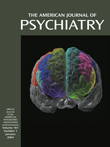The issue of recognition and management of depression in children and adolescents has received a lot of attention lately. The reasons for this attention include the issue of the stress-vulnerability model of illness (e.g., possible increase of major depression in children who lost at least one parent in the World Trade Center terrorist attack), the controversy about the efficacy of antidepressants in children and adolescents, and the recent controversy about the possible increase of suicidality among children and adolescents during treatment with some selective serotonin reuptake inhibitors (SSRIs). The recognition and management of depression in children and adolescents is an important clinical issue requiring periodical upgrading of clinical skills and knowledge. Up-to-date reviews, as well as conferences, usually serve as a vehicle for such an upgrading. American Psychiatric Publishing, Inc. (APPI), has systematically provided clinicians with compendiums of current thinking in various clinical areas. This small book, part of volume 21 of the traditional APPI review series, represents such an up-to-date review of the recognition and treatment of childhood and adolescent depression.
The book consists of five chapters written by experts in the field. Chapter 1, “Depression in Children and Adolescents: An Overview,” by Bruce D. Waslick, Rachel Kandel, and Aphrodite Kakouros, is a comprehensive review of the topic that, like the rest of the chapters, follows a standard format. It discusses the clinical description, diagnosis, epidemiology, etiology (biological, psychological, and social/environmental correlates), and natural history and clinical course of depression in children and adolescents. The authors emphasize that children and adolescents rarely contact mental health professionals for evaluation of mood symptoms, although they may more frequently contact professionals and services in the school setting. Thus it seems that school-based screening services and referral systems may be of special importance in the prevention, recognition, and management of depression in children and adolescents. The authors also point out that adolescent onset of depression is more specifically associated with continuing problems with mood disorders in adulthood.
Chapter 2, “Psychotherapy for Depression and Suicidal Behavior in Children and Adolescents,” by Laura Munson and Drew M. Velting, focuses on empirically based psychotherapeutic treatment—cognitive behavior and interpersonal therapies. As the authors remind us, there are no randomized controlled clinical trials of psychodynamic/psychoanalytical approaches to treating depressed youth. Most of the psychological treatments for depression use “downward” extensions of adult treatment modalities. Most evidence for the efficacy of cognitive behavior therapy in depressed children so far comes from school-based studies. Cognitive behavior therapy has been found helpful in adolescents; however, cognitive behavior therapy is not superior to other active treatments in reducing depression in preadolescent groups. Cognitive behavior therapy has also been studied in the prevention of depression. The evidence for the efficacy of interpersonal therapy in child and adolescent depression is very limited but seems promising. The evidence for psychotherapy’s efficacy in suicidal behavior in youth is even more limited, and the authors suggest that dialectical behavior therapy seems most promising in this indication.
Chapter 3, “Pharmacotherapy for Depression in Children and Adolescents,” by Boris Birmaher and David Brent, suggests that SSRIs should be the treatment of choice for depression in children and adolescents, while tricyclic antidepressants should not be the first-line treatment for depression in this population. The authors emphasize that achieving remission and preventing relapse/reoccurrence should be the main goal of treatment. They recommend that all patients be offered continuation treatment for at least 6 months after complete symptom remission and that the dose of the antidepressant used in the continuation treatment should be the same as the dose used during the acute treatment. Drs. Birmaher and Brent also caution that most of the recommendations are extrapolated from adult depression studies and literature. For obvious reasons of timing, this chapter could not include the recent warning about some SSRIs and suicidality.
Chapter 4, “Bipolar Disorder in Children and Adolescents: A Critical Review,” by Gabrielle A. Carlson, is an astute and comprehensive review of the phenomenology and treatment of child and adolescent bipolar disorder by an experienced clinician. The author discusses the developmental aspects of this disorder, e.g., that “premorbid” is not a fixed entity and that self-control over tears, anger, and excitement gradually increases through the preschool and school years. The treatment part of this chapter is fairly brief because the data are scarce.
Chapter 5, “Suicide and Suicidal Behavior in Children and Adolescents,” by David Shaffer and Ted Greenberg, discusses the epidemiology, clinical manifestation, underlying etiological risk factors, and assessment and treatment of suicidal behavior in children and adolescents. The authors point out the changes in incidence of youth suicide over the past 40 years and attribute the recent decline in youth suicide to a very substantial increase in prescribing antidepressants for the general teenage population.
As I stated earlier, this book represents the most up-to-date and comprehensive review of recognition, assessment, and management of child and adolescent depression. It has a few minor flaws. For instance, I would like to read more on dysthymia in adolescents, or on combining pharmacotherapy and psychotherapy. The book is also cut and dried, like many reviews in this series, and understandably quite tentative in its recommendations. However, in all fairness, considering the scarcity of data, this is a top-notch and most current review book in this area. I would recommend it to all child and adolescent psychiatrists and all clinicians involved in the management and interested in the well-being of depressed children and adolescents.

